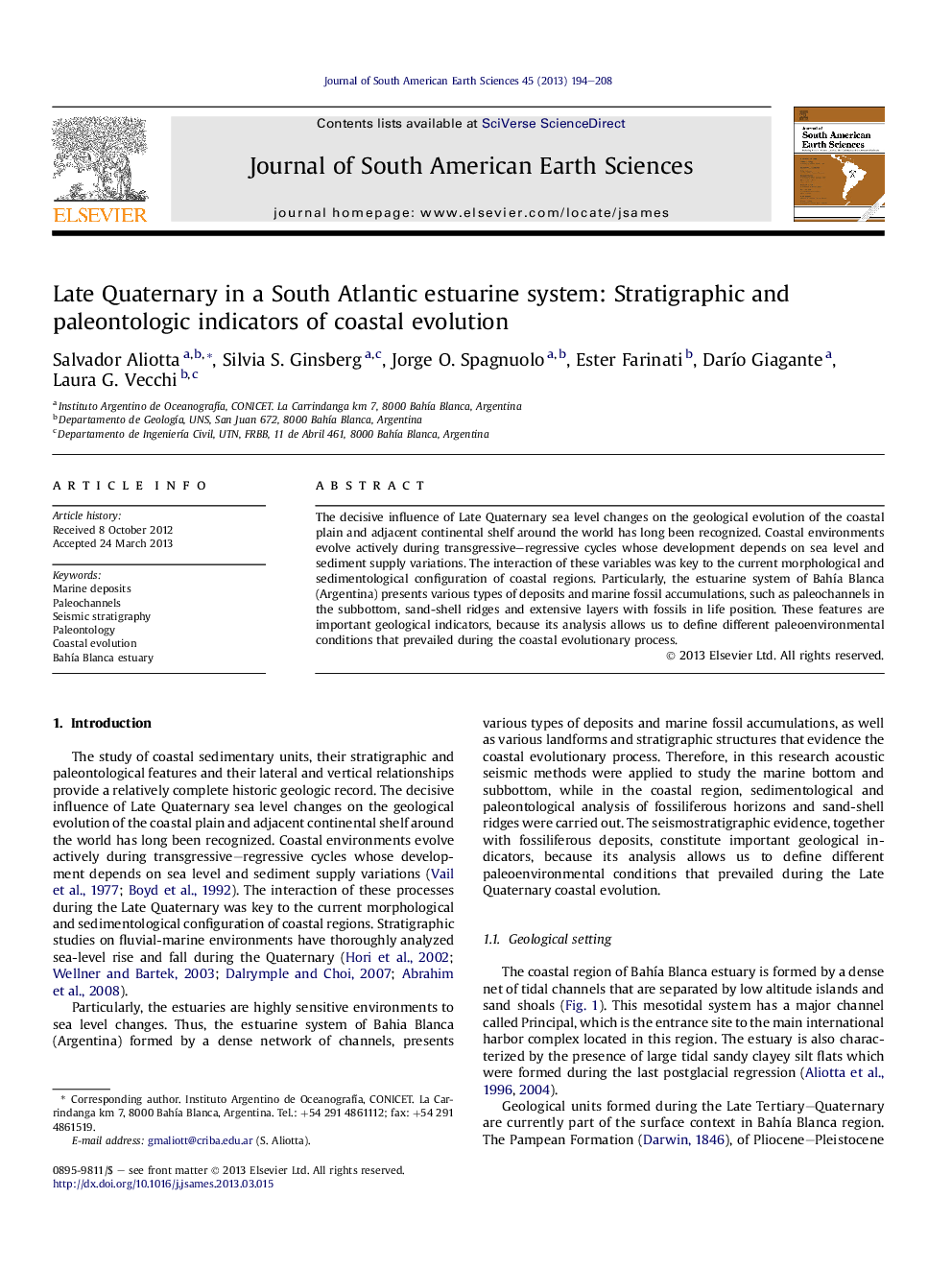| Article ID | Journal | Published Year | Pages | File Type |
|---|---|---|---|---|
| 4682342 | Journal of South American Earth Sciences | 2013 | 15 Pages |
•Several deposits in Bahía Blanca estuary are evidence of the coastal evolution.•Paleochannel are seismic stratigraphic indicators of Pleistocene fluvial systems.•Sand-shell ridges originated during the Holocene show the transgressive maximum.•Fossils in life position are paleontologic indicators of Holocene regressive process.
The decisive influence of Late Quaternary sea level changes on the geological evolution of the coastal plain and adjacent continental shelf around the world has long been recognized. Coastal environments evolve actively during transgressive–regressive cycles whose development depends on sea level and sediment supply variations. The interaction of these variables was key to the current morphological and sedimentological configuration of coastal regions. Particularly, the estuarine system of Bahía Blanca (Argentina) presents various types of deposits and marine fossil accumulations, such as paleochannels in the subbottom, sand-shell ridges and extensive layers with fossils in life position. These features are important geological indicators, because its analysis allows us to define different paleoenvironmental conditions that prevailed during the coastal evolutionary process.
Graphical abstractFigure optionsDownload full-size imageDownload as PowerPoint slide
